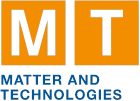Conveners
Morning session
- Christina Schwemmbauer (ALPS (ALPS _ Any Light Particle Search))
Morning session
- Ulrich Einhaus (FTX (Fachgruppe SLB))
We present the results and analyses of radiation spectra expected to be
produced by highly relativistic particle beams propagating through a
plasma medium and experiencing the hosing instability.
Coherent and incoherent contributions to the spectra are determined
in-situ for all simulated particles (>10^9) of the particle cloud and
ambient plasma for a lage assembly of detectors.
With...
Low Gain Avalanche Diodes (LGADs) are fast sensors allowing the detection of particles with high time and spatial resolution, thus enabling the so-called 4D particle tracking. Due to their high radiation hardness and low material budget, LGADs are excellent sensors for in-beam detectors used for example for beam monitoring and reaction time (T0) determination in high-rate High Energy Physics...
Future $e^+e^-$ Higgs factory collider projects are designed for preci-
sion measurements of the Higgs boson and of electroweak observables,
thereby utilizing every event to their full potential. The identification
of the pions, kaons and protons plays a key role for precision measure-
ments and event reconstruction, especially for the flavour tagging. To
improve the identification of...
The method of Steady-State Microbunching (SSMB) as proposed by Alex Chao and Daniel Ratner in 2010 is envisioned to generate intense coherent synchrotron radiation at a storage ring. The scheme would allow synchrotron light with brilliance similar to an FEL while enabling high repetition rates typical for a storage ring.
A proof-of-principle (PoP) experiment is conducted at the MLS storage...
Compact free electron lasers (FELs) require short period, high-field undulators in combination with shorter accelerator structures to produce coherent light up-to X-rays. Likewise, for the production of low emittance positron beams for future linear and circular lepton colliders, like CLIC or FCC-ee, high-field damping wigglers are required. Using high-temperature superconductors (HTS) in form...
In recent years, Laser Plasma Acceleration (LPA) has become a promising alternative to
conventional RF accelerators. However, so far, it has only been theoretically shown that generating
polarized LPA beams is possible. The LEAP (Laser Electron Acceleration with Polarization)
project at DESY aims to demonstrate this experimentally for the first time, using a pre-polarized
plasma...
Photon polarization studies provide subtle information on the directionality and isotropy of the photon emission or interaction processes. As a lot of radiative processes provide distinct polarization features, the most rigorous experiments on these processes must also include a polarization analysis. Polarimetry in the hard x-ray regime can be performed by exploiting the polarization...

